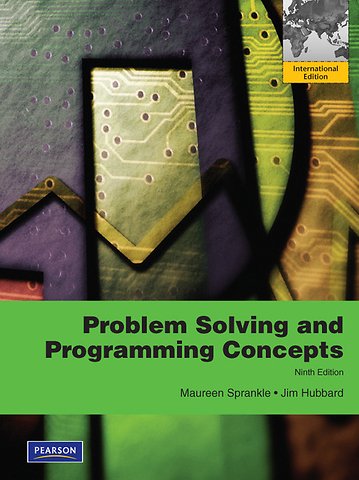Problem Solving & Programming Concepts
International Edition
Paperback Engels 2011 9780273752219Samenvatting
A core or supplementary text for one-semester, freshman/sophomore-level introductory courses taken by programming majors in Problem Solving for Programmers, Problem Solving for Applications, any Computer Language Course, or Introduction to Programming.
Revised to reflect the most current issues in the programming industry, this widely adopted text emphasizes that problem solving is the same in all computer languages, regardless of syntax. Sprankle and Hubbard use a generic, non-language-specific approach to present the tools and concepts required when using any programming language to develop computer applications. Designed for students with little or no computer experience — but useful to programmers at any level — the text provides step-by-step progression and consistent in-depth coverage of topics, with detailed explanations and many illustrations.
Instructor Supplements (see resources tab):
Instructor Manual with Solutions and Test Bank
Lecture Power Point Slides
Go to: www.pearsoninternationaleditions.com/sprankle
Specificaties
Lezersrecensies
Inhoudsopgave
Rubrieken
- advisering
- algemeen management
- coaching en trainen
- communicatie en media
- economie
- financieel management
- inkoop en logistiek
- internet en social media
- it-management / ict
- juridisch
- leiderschap
- marketing
- mens en maatschappij
- non-profit
- ondernemen
- organisatiekunde
- personal finance
- personeelsmanagement
- persoonlijke effectiviteit
- projectmanagement
- psychologie
- reclame en verkoop
- strategisch management
- verandermanagement
- werk en loopbaan
